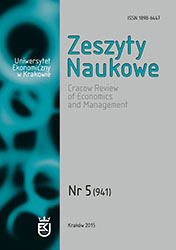Flexible Exchange Rates as Shock Absorbers in Central and Eastern Europe
Flexible Exchange Rates as Shock Absorbers in Central and Eastern Europe
Author(s): Victor ShevchukSubject(s): Economy
Published by: Wydawnictwo Uniwersytetu Ekonomicznego w Krakowie
Keywords: exchange rate regime; SVAR; the Blanchard-Quah decomposition; transformation economies
Summary/Abstract: Considering the merits of the flexible exchange rate and its ability to absorb asymmetric macroeconomic shocks, results on the basis of a two-variable SVAR model suggest that this ability was lacking in both Hungary and Romania, as regardless of the data used more than 80% of variability in the nominal (real) exchange rate over a four-quarter horizon can be explained by neutral structural shock. Variability in output is determined mainly by non-neutral (permanent) structural shocks. As for Poland and, to a lesser extent, the Czech Republic, the evidence supporting the stabilising properties are somewhat stronger, with up to 30% to 40% of changes in the nominal (real) exchange rate being explained by the permanent (output) shock. However, the results are sensitive to the data used.
Journal: Zeszyty Naukowe Uniwersytetu Ekonomicznego w Krakowie
- Issue Year: 941/2015
- Issue No: 05
- Page Range: 17-35
- Page Count: 19

